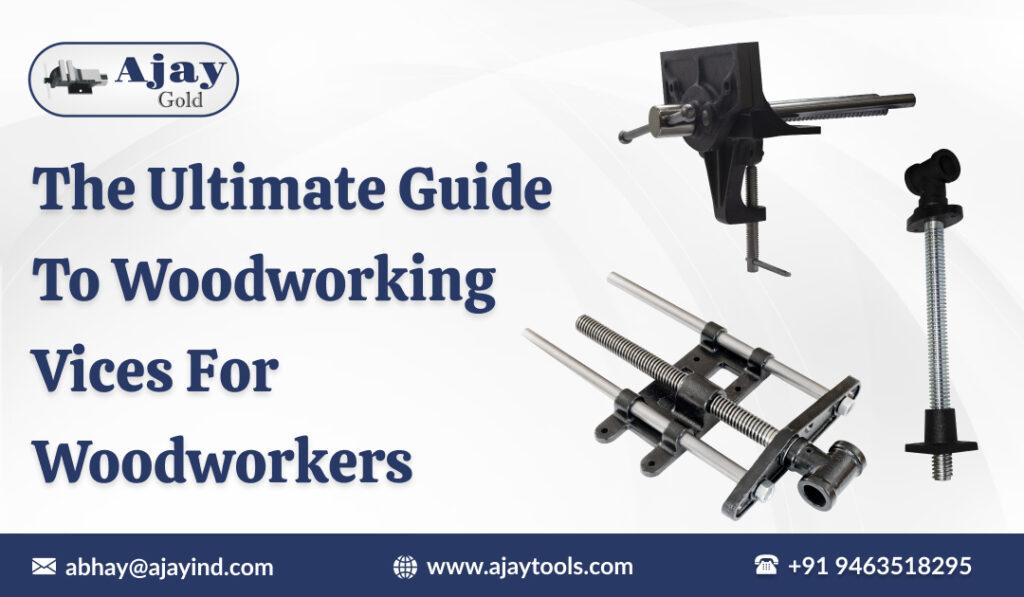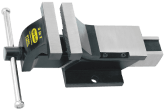A woodworking vice refers to a heavy-duty wood clamping vice that is attached to a worktable. It can be used for heavy-duty use because of its design as it has solid and wide jaws that can hold heavy-duty objects during work applications. In some trades, a woodwork vise is also known as a woodworker’s vice. In today’s blog, we’ll discuss different applications of a woodworking bench vise
What is a woodworking vice used for?
A woodworking bench vice can be used for light as well as heavy-duty work as it can hold both small and large pieces of wood. Because of its strong clamping abilities, it is used by expert woodworkers and in manufacturing industries for producing wood products. Woodworking vices come in a variety of sizes and styles, and they are typically made from durable materials such as cast iron, steel, or aluminum. The vice can be used to perform various operations, such as:
- SawingIn carpentry, sawing is performed.Workbenches with vices are used because a woodworking vise can be used to hold a piece of object to cut it. You can use a heavy-duty vise to grab the material when you cut the object. You don’t need to grip the object as an object can be held by a vice
- Drilling Ensure to buy the best qualitywoodworking bench vise to perform any tasks in the right way. If you work with a drilling device, then it can be held at the position where you need to make holes in the object.
- Using SandpaperEvery woodworker might know that sanding needs enough time and effort. Therefore, by using a woodworking , tasks can be performed easily and in no time. Vise can securely hold the object so you can rub sandpaper against the object. Using a vise, you can be sure that the object won’t slide off. The jaws of the vice are strong and can hold the object, while saving you time and giving you desired results.
Safety Precautions while using Work Bench with Vice
While using a vise, make sure to follow all the safety rules:
- Make sure the vice is securely attached to the workbench to avoid slippage.
- The stationary jaw must be kept at a length slightly beyond the workbench to prevent the long pieces from interference.
- Vise and material size must be kept at a compatible range to avoid vibration during operations, such as documenting, sawing, and so on.
- Make sure the vice’s jaws give full clamping features.
With all the safety precautions, the quality of woodworking vice makes a huge impact on the safety of workers. Therefore, make sure to buy any type of vises from a reliable manufacturer and supplier of woodworking vises.
Warnings You must be aware of when using Woodworking Bench Vice
- Don’t try to widen the jaws of the vise more than they are designed for.
- Avoid extra clamping pressure because it can damage the vise.
- Never attempt to tighten the vise more than necessary.
- If you notice stress fractures, replace the part of the vise if it is replaceable.
- Don’t try to repair the vise on your own.
When choosing a woodworking vice, it is important to consider the size and weight of the workpiece that you will be working on, as well as the type of woodworking tasks that you will be performing.In addition to holding the workpiece securely in place, a woodworking vice can also help to improve the accuracy and precision of your woodworking projects. By holding the workpiece firmly in place, you can make clean, straight cuts and accurate measurements, ensuring that your finished project is of the highest quality With a variety of styles and sizes to choose from, there is a woodworking vice that is perfect for every woodworking project.
Conclusion
In conclusion, a woodworking vice is an essential tool for any woodworker, providing a secure grip on the workpiece and allowing for accurate and precise woodworking. In addition to this, you can contact Ajay Tools to buy high-quality woodworking bench vise.
Other Useful Links:-
What is a Machine Vice and How Does It Work?


